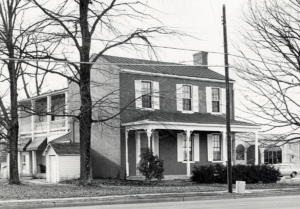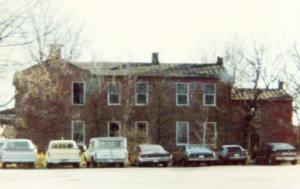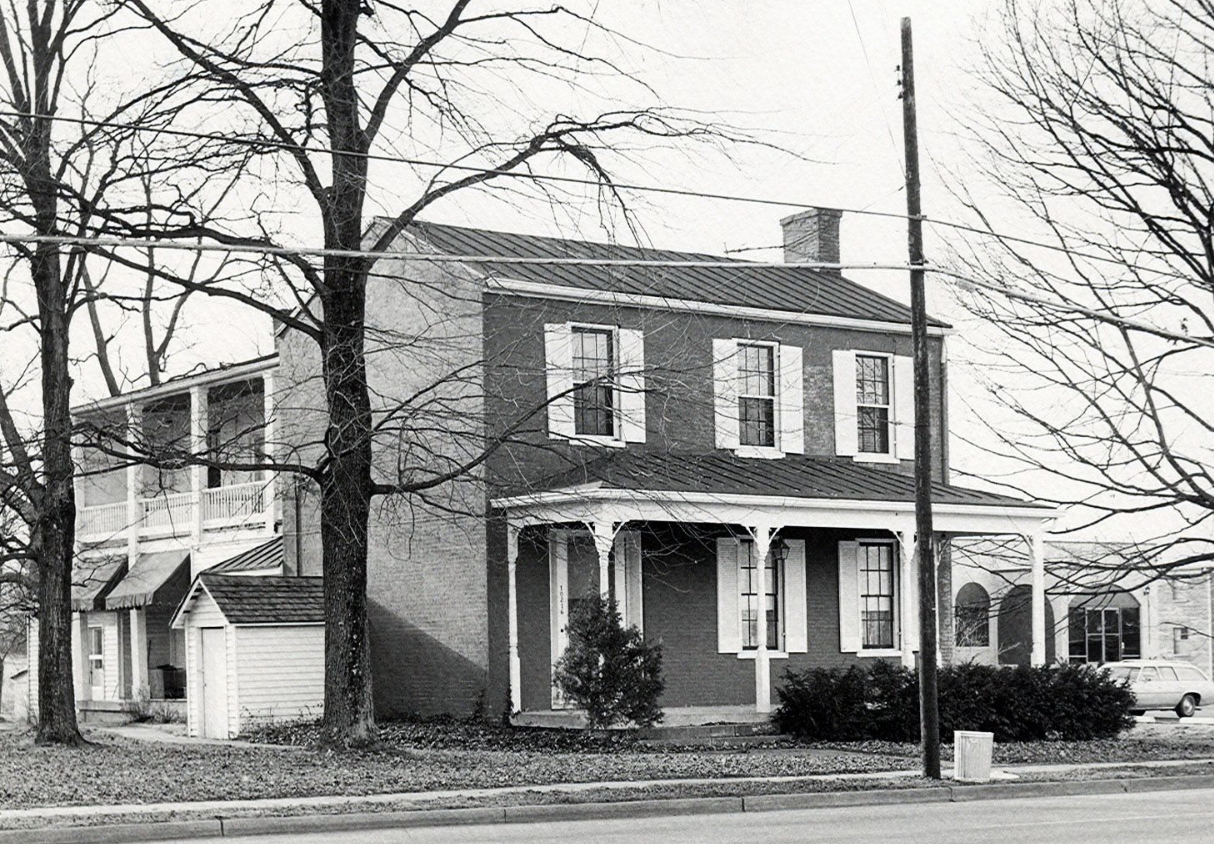The Floore House Represents Two Centuries of Local History
Writer / Beth Wilder, Director, Jeffersontown Historical Museum
Photography Provided
Every town has a history, and as such, will always contain certain memorable structures that remain indelibly etched in the minds and hearts of its citizens. Time marches on and tends to take those unforgettable structures right along with it, piece by piece, as they deteriorate with age. Typically, well-meaning citizens band together and try their hardest to preserve these precious landmarks, but quite often, all their hard work comes to naught, as not every structure can age gracefully and withstand the ravages of time. 
Jeffersontown residents will easily recognize one such notable place that disappeared from our town several decades ago – the Floore House.
The large red-brick, two-story, federal-style building was located where Jeffersontown Family Practice now stands, at 10216 Taylorsville Road. It was named for J.W. Floore, who purchased the house in 1894, and whose descendants maintained ownership of it until 1975. Even at the time Floore purchased the site, it already had a very extensive history.
The house was built on a three-acre tract of land in 1823 for Conrad Tracenrider, who had purchased several lots on the town square in the early 1800s. It had 12-foot ceilings, 14-inch-thick brick walls, and a two-story open gallery on the rear wing.
A wool-carding mill may have been on the property as early as 1814, since one is associated with a man named George Evinger, who owned surrounding land, and William Tucker was known to have later operated a carding mill at that location. Tracenrider emigrated to Floyd County, Indiana, around 1827, and in 1837 it is recorded that Tucker purchased the land and machinery for the carding mill from John Hikes.
In 1860 the site entered a new phase of existence when the Jeffersontown trustees and local businessmen decided to organize a boarding school called Jefferson College. Each man contributed $50 to $250 toward the purchase price of the three acres. A school was built on the site, and the two-story, red-brick home served as the dormitory for Jefferson College.
Unfortunately, by 1871 the school was in financial trouble, owing almost $1,200 to George W. Welsh for management of the college. The trustees sought out a buyer for the property, and evidently found one, but he did not intend to continue the school. Because of this, the heirs of Tucker sued the trustees, claiming the deed stated the land would be used for school purposes. The trustees filed a counter-suit and were granted full title by the court, with the authority to sell the property to whomever they pleased. The trustees kept the school going until 1873, when they sold it to Harrison Arterburn.
The school was razed around 1880, although the house was left standing. The property eventually passed to Jacob Hummel, whose heirs sold it to P.B. Kendall. In 1894 it became the property of Jordan White Floore, although he did not move in until 1903. The house remained in possession of members of the Floore family until 1975, when it faced its greatest challenge yet.
 By this point the home was more than 150 years old and beginning to show its age. On April 6, 1974, the Historical Society of Jeffersontown and Southeastern Jefferson County installed a historical marker in front of the Floore house, which was said to be the oldest brick house in Jeffersontown. Members of the Historical Society had placed the marker in front of the home because Marshall Floore Sr. had passed away the previous August, and they wanted to see the house preserved in case his heirs decided to sell the land.
By this point the home was more than 150 years old and beginning to show its age. On April 6, 1974, the Historical Society of Jeffersontown and Southeastern Jefferson County installed a historical marker in front of the Floore house, which was said to be the oldest brick house in Jeffersontown. Members of the Historical Society had placed the marker in front of the home because Marshall Floore Sr. had passed away the previous August, and they wanted to see the house preserved in case his heirs decided to sell the land.
In March of 1975, a real estate agent named Ronald Snyder signed a contract to purchase the Floore home for $127,000. This caused a bit of consternation, because several others, including the Jeffersontown City Council, had shown an interest in acquiring the property. Local businessman Reid Martin wanted to buy it and develop the back end of the property, and then upon his death, deed the house to the City of Jeffersontown for a museum. Snyder ended up with the site but had no intention of restoring the old home, because it was economically unfeasible for him. He estimated such costs to be about $40,000 to $50,000, and stated that he had bought the property for investment purposes, but that he would only sell to the city or a nonprofit.
The City Council, for its part, refused to pay for restoration of the building unless they were assured that they would not only have the option to buy, but also that the money they spent would go toward the purchase. Ultimately the City Council decided the price was more than the city could afford. The Historical Society was confused by the entire situation and hoped that whoever purchased the property from Snyder would preserve the old brick home.
Meanwhile, time began to slip by, and the house continued to fall into disrepair. By 1979 Snyder said the house had some major structural issues and that it would now cost $80,000 to $100,000 to restore it. A couple of doctors had planned to buy the property and tear down the house to make way for a more modern office structure, but that deal fell through due to lack of financing. The Historical Society pointed out that there were tax advantages and possible federal matching funds to help restore the property, but it was still going to take a lot of money to try to salvage the old house. Snyder was beginning to question what could be done with the house at that point, even if it were restored.
In 1980 the Jefferson County Office of Historic Preservation sponsored an open house in the hope that someone would undertake the renovation and adapt the Floore House for reuse. Several months later the house was still up for sale, and Snyder was trying to get it on the National Register of Historic Places to make sure it would be preserved. He even offered to lower the price of the house to $90,000 for anyone who would sign an agreement to restore the place. Snyder figured at that point, it would cost close to $150,000 to restore the old house.
By 1982 the house was on the National Register of Historic Places and Snyder was asking $225,000 for the property. The house carried a high price tag because it was zoned commercially. Still, Snyder required that the buyer agree to restore the house and at least utilize it for office space.
In 1985 Dr. Kenneth Peters purchased the property with the intent of creating a family practice and medical center. At that time the house was demolished to make way for the new facility, and the rest, as they say, is history. A Jeffersontown landmark was gone, but not through lack of trying to save it. Everyone in Jeffersontown did their level best to try to preserve a much-loved building, but its dilapidated condition and the cost to repair it simply proved too great. No one should complain, however – the town has now had its own medical center for several decades, and it will always have the memories left behind by the lovely red-brick house that was a large part of Jeffersontown’s history.





